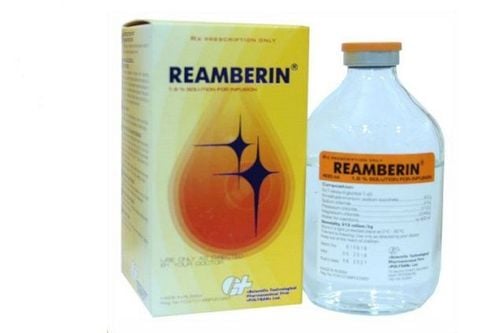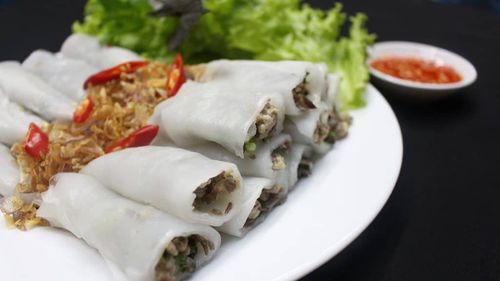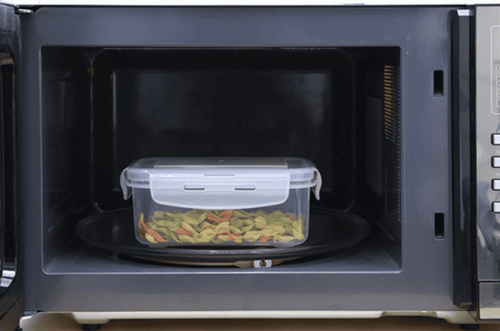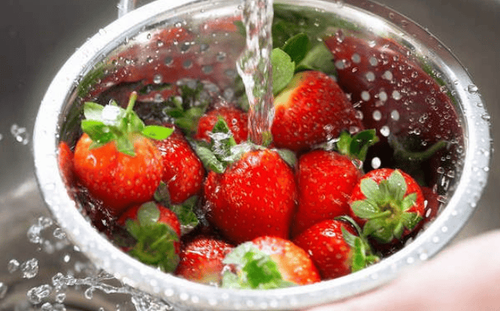This is an automatically translated article.
After family parties, using leftovers is a way to save time preparing the next meal, as well as avoid food waste. But does reheating food in the microwave lose vitamins and nutrients?
1. Microwave's ability to preserve nutrition
In general, microwave ovens do not bring any harm as many people often think. Basically, the way microwaves work is closely related to water molecules. Specifically, the high frequency radiation of about 2.45GHz generated by the microwave oven will mainly affect the water molecules in the food. This energy causes them to shake, move, collide with each other, and go from cool to hot in seconds.
The concept of avoiding microwave ovens because of concerns about nutrient loss or radiation risks is completely wrong. The truth is that microwaves not only don't involve radiation that's harmful to you, but can heat meals and vegetables without destroying all the nutrients.
Although the mineral content of food is not affected when reheating food in a microwave oven, the percentage of vitamins will be lost a little, especially Vitamin C and B vitamins. Some nutrients - especially Vitamin C, will be broken down during any heating process. Vitamin C is more sensitive to heat than most water-soluble vitamins and antioxidants, experts say. So you will definitely lose some Vitamin C when cooking as well as reheating leftovers.
In other words, any form of cooking affects heat-sensitive nutrients. However, a microwave oven will help preserve nutrients optimally thanks to two main points:
Heats quickly, minimizing the time food is exposed to heat. Meanwhile, the oven can reduce the percentage of nutrients more than the microwave because of the longer heating time;

Lò vi sóng giúp làm nóng thức ăn nhanh chóng
There is no need to add too much cooking water, besides, the less water you use when cooking, the more nutrients will be retained. Likewise, the more water you cook with, the more nutrients will leak out. In fact, cooking vegetables in the microwave will help retain more nutrients than traditional cooking methods, like boiling. Therefore, reheating food in the microwave is a really ideal way, which is both convenient and minimizes the risk of mineral loss.
2. Tips for using a microwave oven
Like any heat preparation method, the microwave can affect the nutritional content to a certain extent, depending on how you use it. If you enjoy reheating food in the microwave, apply the following tips to help get the most out of your food, especially vegetables:
Stir often A potential downside to reheating Microwave food is uneven in nature, which can lead to a risk of food poisoning. To be on the safe side and avoid the risk of food poisoning, stop the oven 1-2 times during cooking and mix the food well so that everything is heated evenly, especially when reheating rice or large amounts of food. eat too much.
Add just a little water The advantage of cooking in the microwave is that you don't need to add as much water as when boiling vegetables. Thanks to that, the dish does not leak many vitamins and minerals. For vegetables, you don't have to use much water, just a few spoons is enough to heat and soften the vegetables, as well as ensure the retention of essential nutrients.

Sử dụng lò vi sóng đúng cách giúp thực phẩm sau chế biến không bị rò rỉ nhiều vitamin và khoáng chất
Cook vegetables just enough Cooking or reheating food in the microwave does not overcook vegetables or become soggy. Vegetables should be roasted for a short time to avoid loss of nutrients. If you continue to roast vegetables in the oven after they are cooked, your dish may spoil, burn, or soften. To steam vegetables, use a fork to pierce the sides, put in a bowl, cover, then steam for 3-4 minutes in the microwave. If you want to boil, you need to pre-wash with water, place on a plate in the oven for about 30 seconds to 2 minutes for regular vegetables, or about 5 minutes or more for hard roots like carrots.
Understand your microwave It is advisable to find out the capacity of your microwave oven to avoid overcooking or undercooking. Microwave ovens currently have a capacity of about 600 - 1200W, if the oven comes with a grill, there are 2 separate power levels when baking (about 1000W) and when cooking (about 800W). The higher the power, the faster it cooks, and the faster the food gets hot and cooked. Low power for defrosting or reheating food in small quantities. Most microwave ovens have a function to change the power level to suit different dishes.
Use microwave-safe containers Most food containers can be microwaved, except for single-use plastic. It's best to use a glass container or other material labeled "microwave-safe", "microwave-safe" or "microwavable". These products have a safe structure, are not contaminated with chemicals and do not dissolve in food, and do not distort when put in the oven. Ceramic bowls/plates or bowls can also be microwaved, but should be avoided with too many decorative patterns, as they may contain lead and some metals that can cause a reaction.
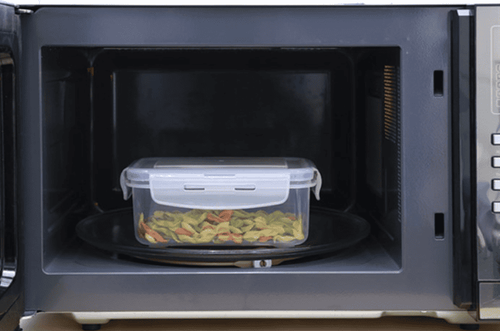
Cần sử dụng đúng loại hộp đựng an toàn với lò vi sóng
Many people are concerned that reheating food, especially in the microwave, will both lose the vitamin content of the food and bring radiation risks. However, this is a misconception. Experts have confirmed that when reheating leftovers, using a microwave oven is a safe, fast, convenient method and ensures the best nutritional value.
References: webmd.com, huffingtonpost.com




